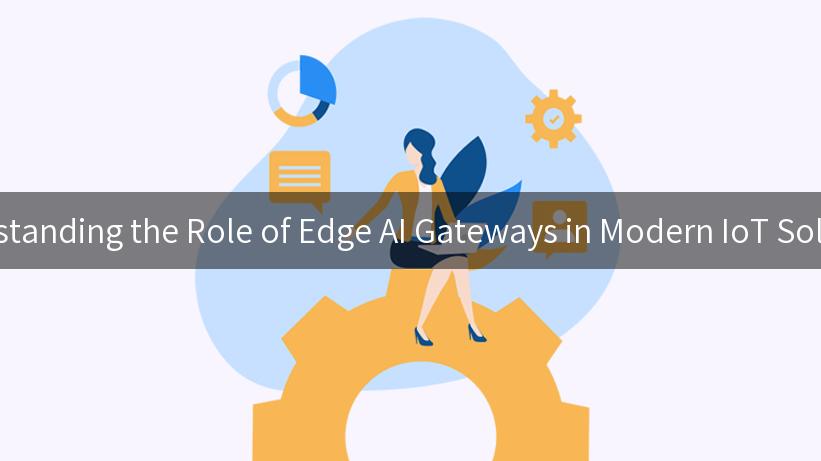
In the fast-evolving landscape of the Internet of Things (IoT), the integration of Edge AI Gateways has become increasingly significant. These gateways serve as a critical bridge between IoT devices and cloud services, enhancing data processing capabilities and fostering real-time decision-making. As we delve into the nuances of Edge AI Gateways and their pivotal roles within modern IoT systems, we will also explore relevant platforms like APIPark and Apigee that facilitate API management and integration.
The Essence of Edge AI in IoT
Edge Artificial Intelligence (AI) refers to the deployment of AI algorithms at the edge of the network, near data sources such as IoT devices. This offers numerous advantages, including reduced latency, improved bandwidth efficiency, and enhanced data security. By processing data at the edge, organizations can harness insights from real-time data without needing to send all information to centralized cloud services. This paradigm shift not only optimizes performance but also empowers devices to operate autonomously in scenarios where network connectivity might be limited.
Key Benefits of Edge AI Gateways
-
Reduced Latency: Edge AI Gateways enable real-time processing and analytics by eliminating the need for round-trip communications with the cloud. Consequently, decisions are made faster, benefiting applications such as autonomous vehicles or industrial automation where immediate response is critical.
-
Bandwidth Efficiency: By processing data locally, Edge AI reduces the amount of data transmitted over the network, significantly lowering bandwidth costs and improving system responsiveness.
-
Data Privacy and Security: Sensitive data can be processed at the edge without being transmitted to the cloud, reducing exposure to potential breaches. Companies can enforce security protocols locally, thus enhancing compliance with data protection regulations.
-
Autonomous Operation: Edge AI gateways can operate independently during outages or connectivity issues, a fundamental requirement for applications in remote or critical environments.
-
Scalability and Flexibility: The deployment of Edge AI allows organizations to scale their IoT solutions seamlessly, accommodating various types of devices and applications.
Role of APIPark and API Open Platforms
APIPark, known for its capabilities in API management, plays a crucial role in the integration of Edge AI Gateways within IoT ecosystems. It represents an API Open Platform, empowering organizations to manage their Application Programming Interfaces (APIs) effectively.
Key Features of APIPark:
-
Centralized API Management: Streamlining the management of APIs allows organizations to ensure consistency in their integrations, particularly when connecting multiple edge devices to cloud services.
-
Full Lifecycle Management: From designing APIs to deployment and decommissioning, APIPark helps enterprises maintain smooth operational flow. This is critical in adapting to dynamic changes in IoT demands.
-
Multi-Tenant Models: The ability to manage multiple tenants on a single platform is essential for service providers aiming to deliver IoT solutions across varied clients, ensuring robust resource management and security.
-
Detailed Usage Logs: Comprehensive logging of API calls enhances troubleshooting and system reliability, significantly benefiting applications where uptime is essential.
Integrating Apigee for API Upstream Management
Another noteworthy platform, Apigee, enhances API management for companies utilizing Edge AI. Apigee complements APIPark when it comes to API Upstream Management, ensuring optimal performance and governance.
The Role of Apigee in IoT Solutions:
-
Traffic Management: Apigee allows organizations to monitor and manage traffic seamlessly, ensuring that Edge AI Gateways can operate effectively even during traffic surges.
-
Analytics and Insights: By capturing and analyzing API usage, Apigee provides organizations with valuable insights to optimize their IoT strategies and adapt to changing demands.
-
Developer Portal: By providing tools and resources for developers, Apigee encourages innovation and fosters a robust ecosystem around API usage.
Edge AI Gateway Architecture
Understanding the architecture of Edge AI Gateways is crucial for organizations looking to implement these solutions. Below is a simplified representation of the Edge AI Gateway architecture:
| Layer |
Description |
| Device Layer |
IoT devices such as sensors and actuators that generate data. |
| Gateway Layer |
Edge AI Gateways perform data processing, analysis, and communication to the cloud. |
| Cloud Layer |
Centralized cloud services that manage data aggregation and larger analytics. |
In this architecture, Edge AI Gateways serve as the linchpin, processing local data and making real-time decisions while ensuring smooth communication with higher-level cloud services.
Example of Edge AI Gateway Implementation
# Example Command to deploy Edge AI Gateway
# Ensure the necessary software (e.g., Docker) is installed
docker run -d -p 80:80 edge-ai-gateway:latest --name edge-gateway
In this command, we are utilizing Docker to deploy an Edge AI Gateway instance efficiently. This flexibility in deployment showcases how organizations can quickly adapt their infrastructure to manage IoT solutions effectively.
APIPark is a high-performance AI gateway that allows you to securely access the most comprehensive LLM APIs globally on the APIPark platform, including OpenAI, Anthropic, Mistral, Llama2, Google Gemini, and more.Try APIPark now! 👇👇👇
Conclusion
The deployment of Edge AI Gateways represents a pivotal innovation in modern IoT solutions. They not only facilitate real-time data processing but also enhance security and operational efficiency. As organizations increasingly seek to capitalize on the benefits of Edge AI, platforms like APIPark and Apigee will play a crucial role in streamlining API management and facilitating integration with broader ecosystems. The blend of these technologies at the edge will undoubtedly propel the IoT landscape into exciting, uncharted territories.
In summary, as we continue to navigate the digital transformation, understanding the tools and technologies, including Edge AI Gateways, will be paramount for businesses to thrive in an increasingly interconnected world.